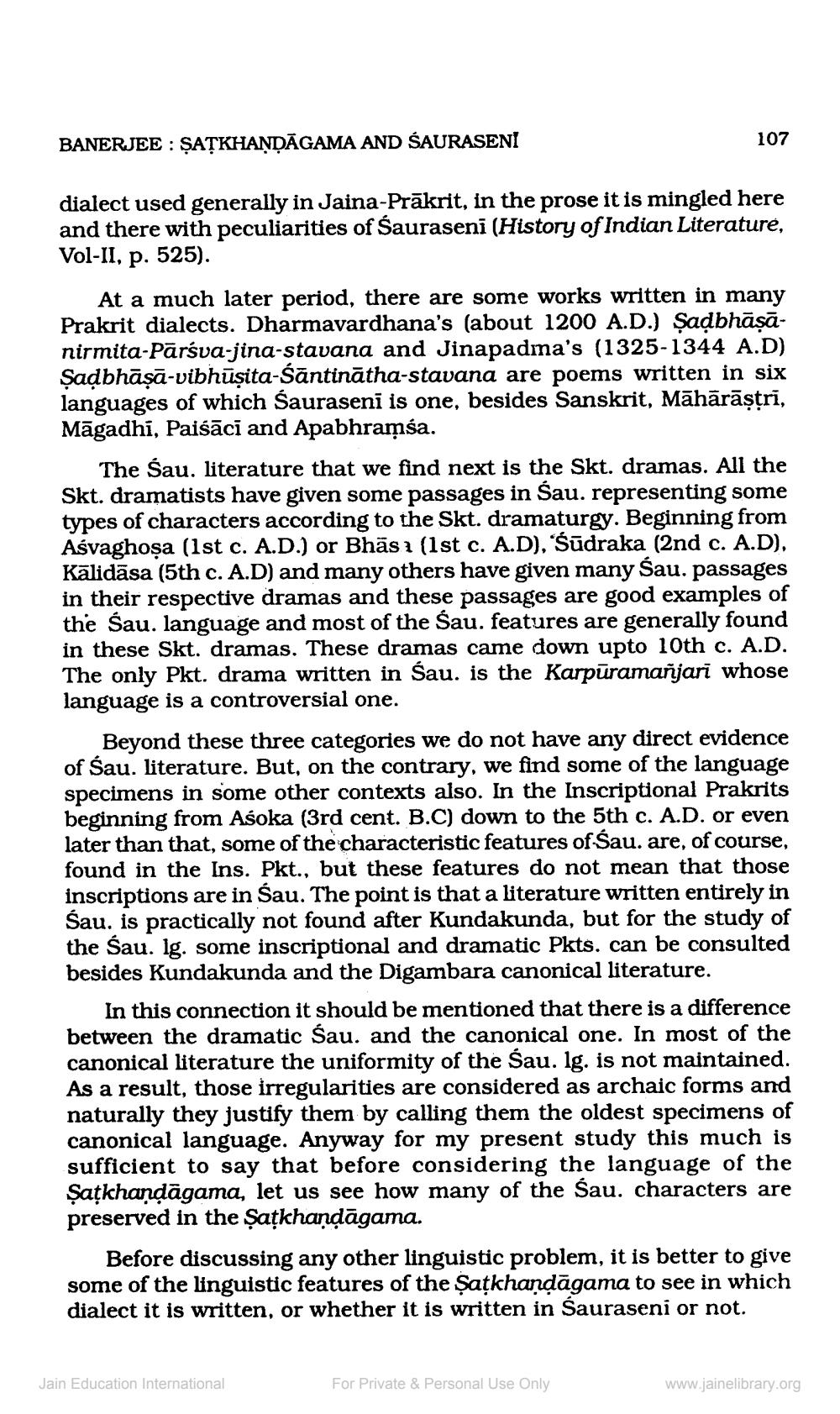Book Title: Jain Journal 1996 04 Author(s): Jain Bhawan Publication Publisher: Jain Bhawan Publication View full book textPage 9
________________ BANERJEE : ŞAȚKHANDĀGAMA AND SAURASENI 107 dialect used generally in Jaina-Prākrit, in the prose it is mingled here and there with peculiarities of Śauraseni (History of Indian Literature, Vol-II, p. 525). At a much later period, there are some works written in many Prakrit dialects. Dharmavardhana's (about 1200 A.D.) Şadbhāsā. nirmita-Pārsva-jina-stavana and Jinapadma's (1325-1344 A.D) Şaạbhāṣā-vibhūşita-Santinātha-stavana are poems written in six languages of which Śauraseni is one, besides Sanskrit, Māhārāștri, Māgadhi, Paiśāci and Apabhramsa. The Sau. literature that we find next is the Skt. dramas. All the Skt. dramatists have given some passages in Sau. representing some types of characters according to the Skt. dramaturgy. Beginning from Ašvaghosa (1st c. A.D.) or Bhās 1 (1st c. A.D), Śūdraka (2nd c. A.D), Kālidāsa (5th c. A.D) and many others have given many Sau. passages in their respective dramas and these passages are good imples of the sau. language and most of the Sau. features are generally found in these Skt. dramas. These dramas came down upto 10th c. A.D. The only Pkt. drama written in Śau. is the Karpūramanjarī whose language is a controversial one. Beyond these three categories we do not have any direct evidence of Sau. literature. But, on the contrary, we find some of the language specimens in some other contexts also. In the Inscriptional Prakrits beginning from Asoka (3rd cent. B.C) down to the 5th c. A.D. or even later than that, some of the characteristic features of Sau. are, of course, found in the Ins. Pkt., but these features do not mean that those inscriptions are in Sau. The point is that a literature written entirely in Śau. is practically not found after Kundakunda, but for the study of the sau. ig. some inscriptional and dramatic Pkts. can be consulted besides Kundakunda and the Digambara canonical literature. In this connection it should be mentioned that there is a difference between the dramatic Sau. and the canonical one. In most of the canonical literature the uniformity of the Sau. Ig. is not maintained. As a result, those irregularities are considered as archaic forms and naturally they justify them by calling them the oldest specimens of canonical language. Anyway for my present study this much is sufficient to say that before considering the language of the Şatkhandāgama, let us see how many of the Sau. characters are preserved in the Șatkhanţāgama. Before discussing any other linguistic problem, it is better to give some of the linguistic features of the Şatkhandāgama to see in which dialect it is written, or whether it is written in Sauraseni or not. Jain Education International For Private & Personal Use Only www.jainelibrary.orgPage Navigation
1 ... 7 8 9 10 11 12 13 14 15 16 17 18 19 20 21 22 23 24 25 26 27 28 29 30 31 32 33 34 35 36 37 38 39 40 41 42 43 44 45 46 47 48 49 50 51 52 53 54 55
